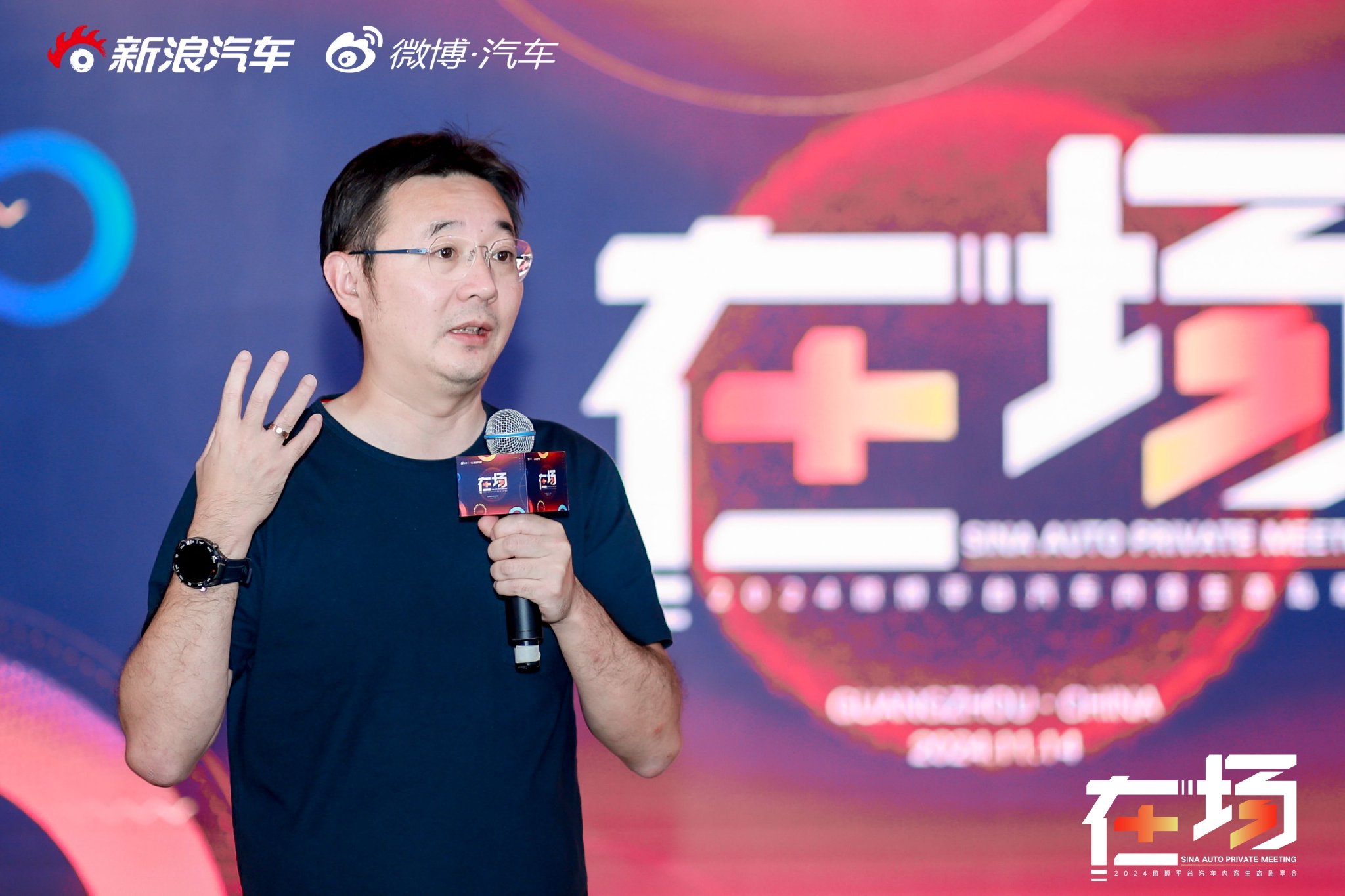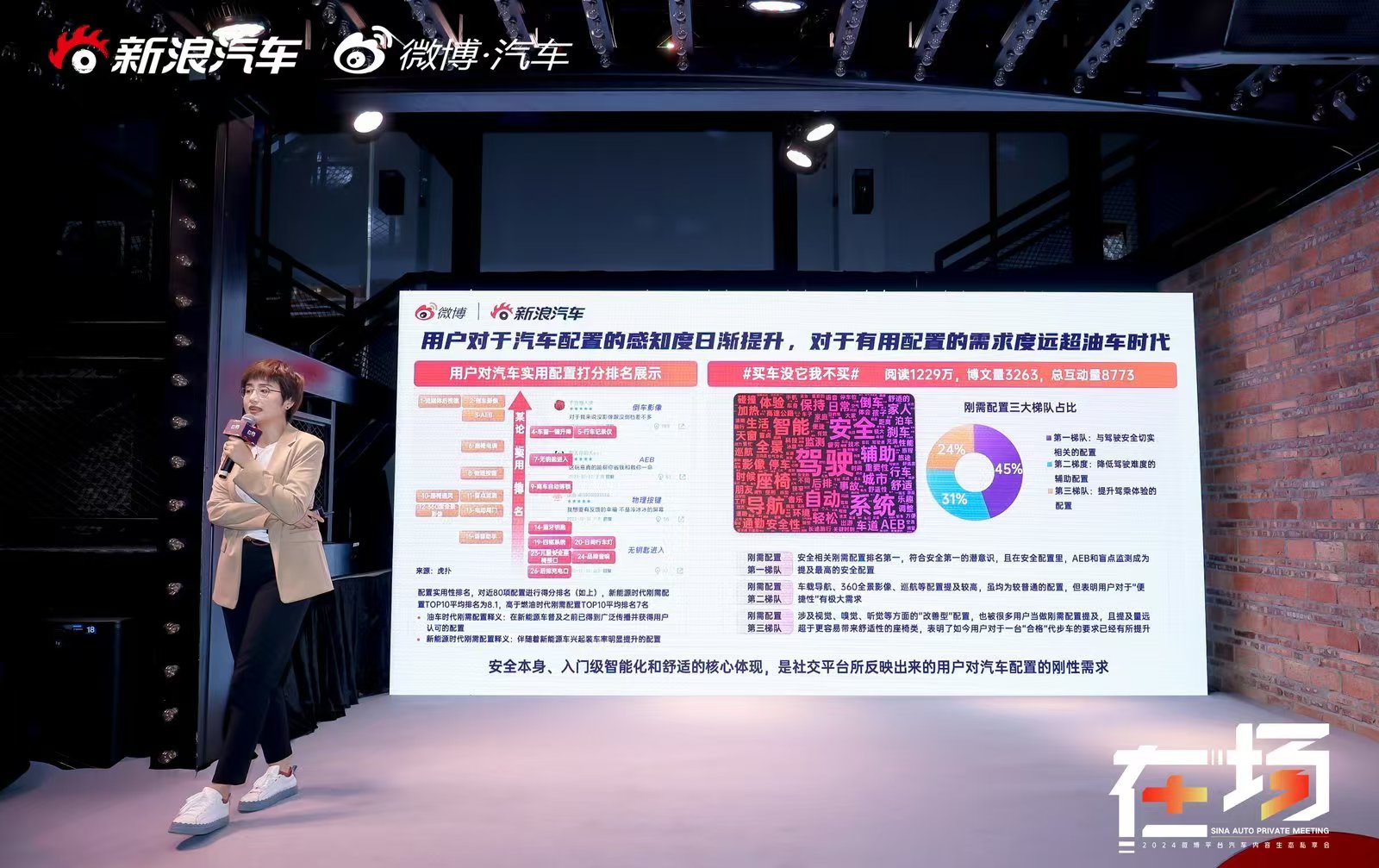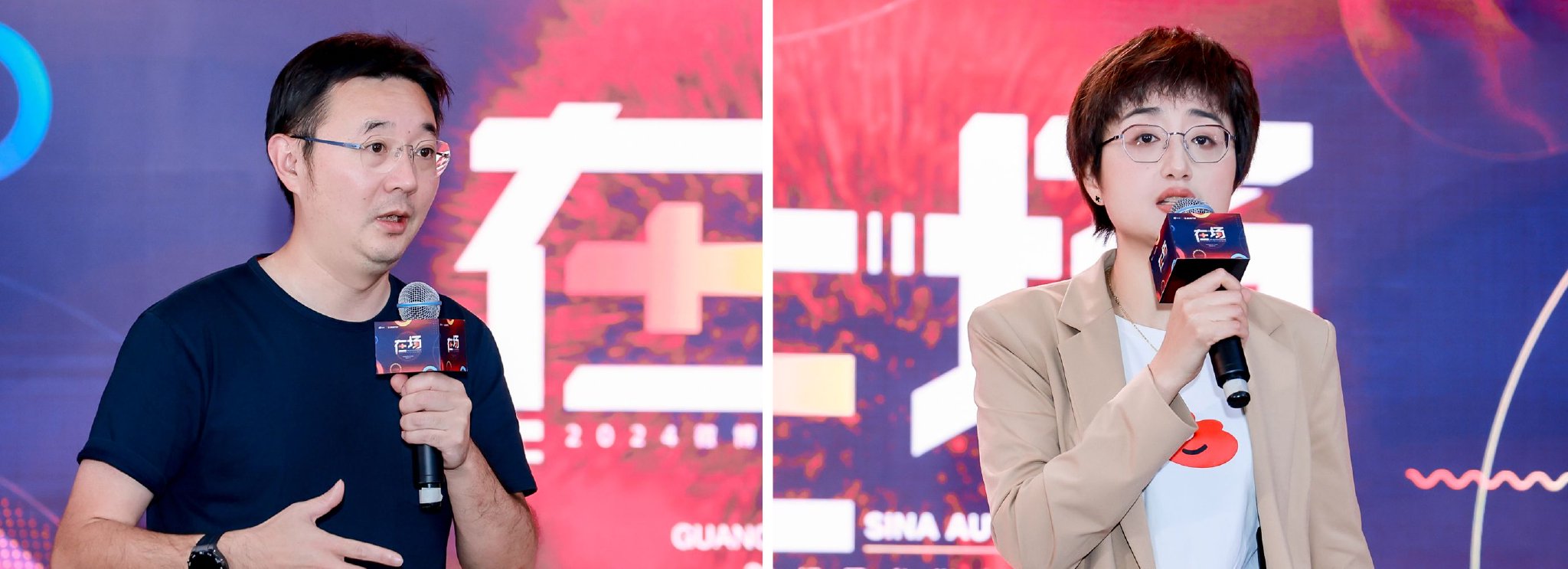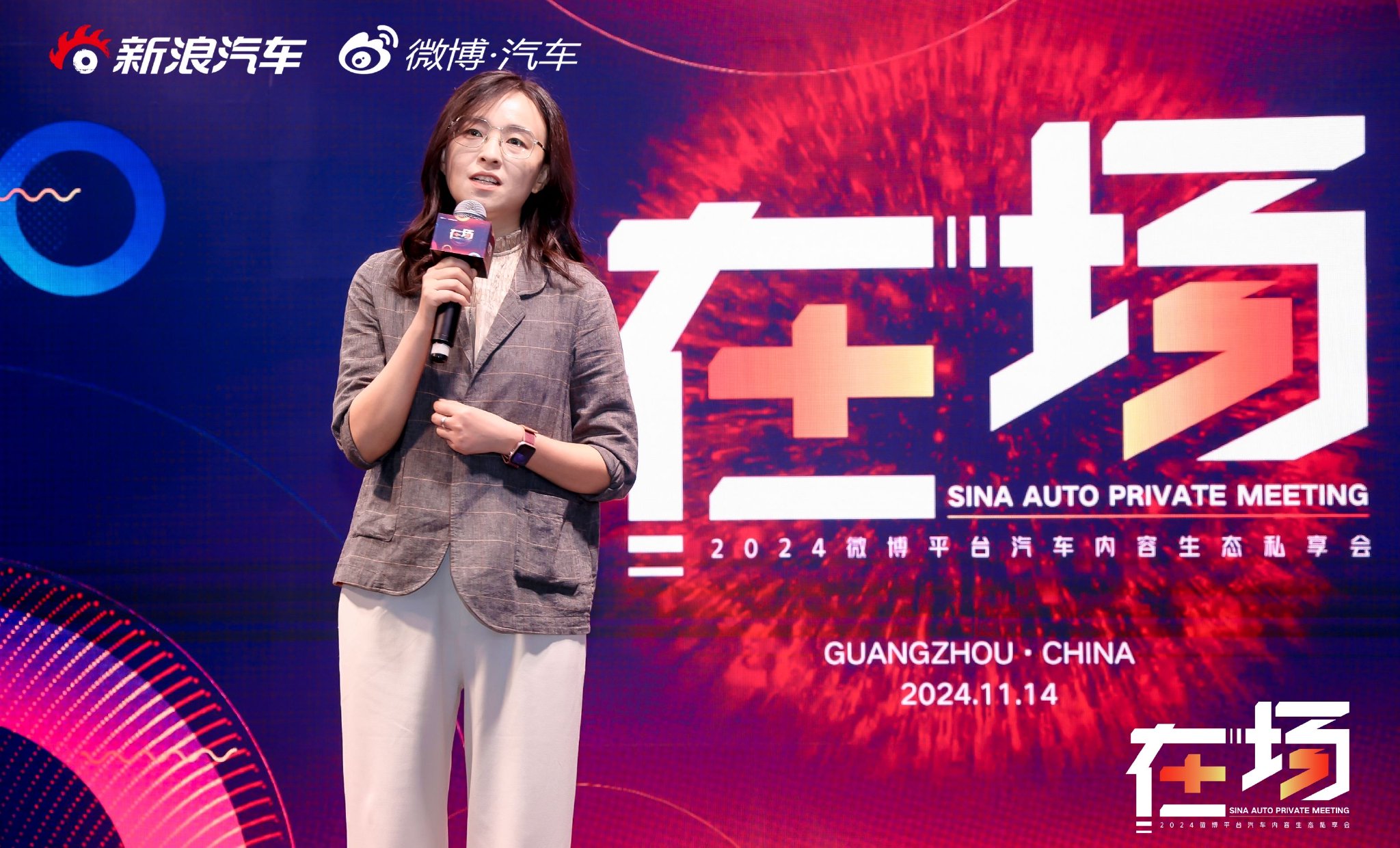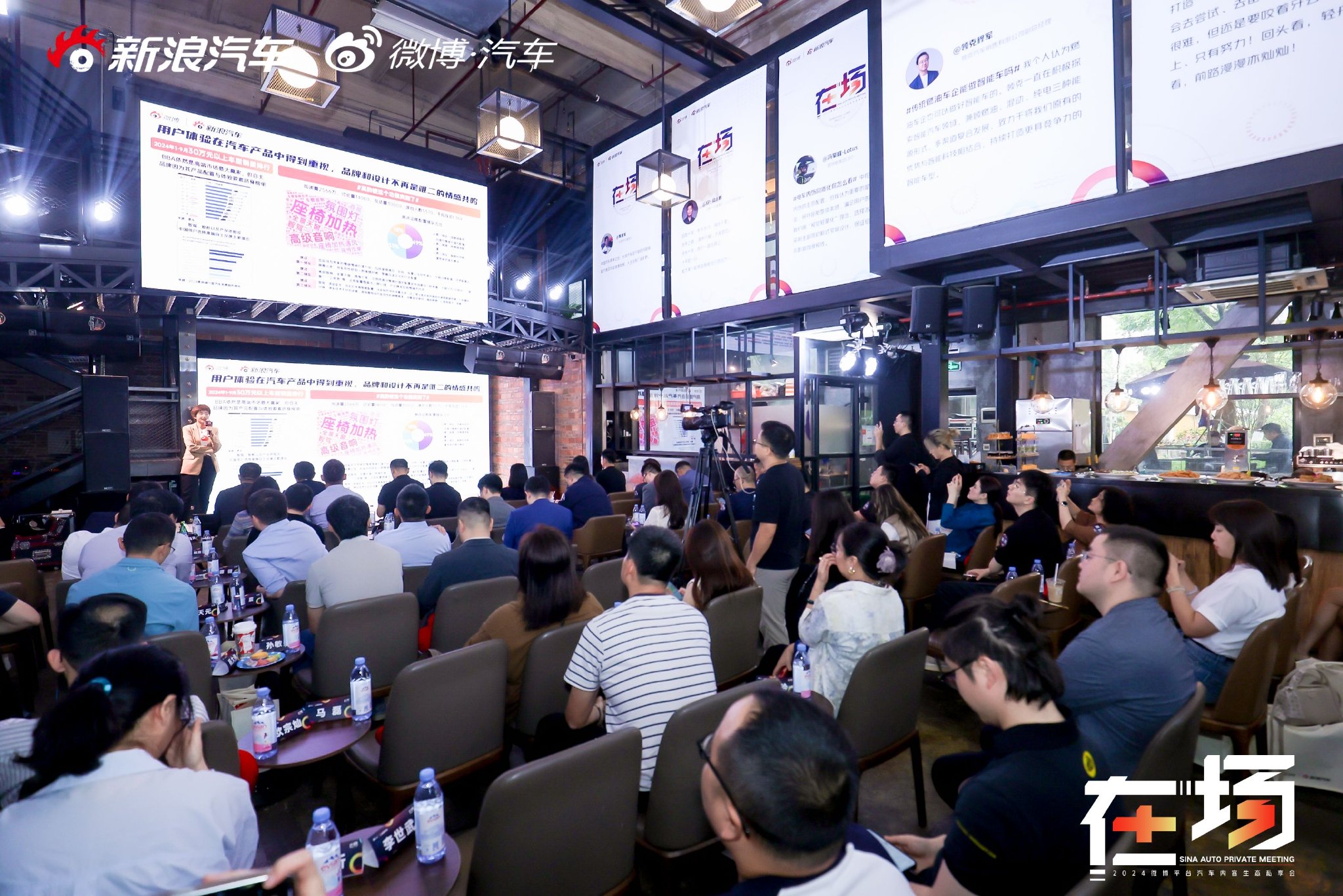Four years ago, Sina Auto launched its Weibo strategy. It shifted from a portal approach to a Weibo strategy. It consistently interprets changes in user behavior and communication trends through a social and professional lens. In 2024, we see more automotive phenomena trending on Weibo. We witness the rise of blue V automotive brands and executives on the platform. These social hotspots continually enhance brand value for car companies. The perspective of social users redefines the demands for product features. As brand marketing becomes more competitive and content consumption diversifies, what drives the shift from “entry” to “presence” for car companies and executives? How do social users’ demands for product features change? On November 14, Sina/Weibo Auto held the “Presence” private meeting in Guangzhou. This event, based on massive platform data, focused on systematic social content marketing. Wu Mo, VP of Marketing and GM of the Auto Division, Qi Yunjie, VP of the Auto Division, and Chen Yao, Chief Editor of Sina Auto, along with industry guests, discussed changes in user behavior and communication trends. They explored the challenges and breakthroughs in content marketing for automotive brands through real case studies and deep exchanges.
In the opening speech, Qi Yunjie, Deputy General Manager of Sina/Weibo’s Automotive Division, stated that Weibo hosts many vertical businesses. The automotive sector outperforms Weibo’s overall performance in content creation, industry trends, and user growth. We see changes in user behavior. Users increasingly rely on automotive content and show heightened interest. Automotive brands deepen their understanding of Weibo. They recognize its value and enhance their engagement with social content on the platform. Today, Weibo’s automotive ecosystem thrives. Previously, traditional automotive media dominated Weibo. Now, it serves as a vital arena for industry opinions. Over the past two years, we have built deeper collaborations with executives. Their involvement encourages many industry professionals—engineers, designers, and chassis experts—to share their knowledge on Weibo. We aim to leverage our unique media and platform perspective. We want to provide insights based on the new era of users. We hope to maximize social platform resources to empower the automotive industry. Our goal is to help brands maintain close communication with consumers, boost brand visibility, and enhance private traffic. This approach will create opportunities for sustained growth in the new media and retail era. Trends in China’s new energy vehicle ecosystem under social media.
Wu Mo, Vice President of Sina/Weibo Marketing and General Manager of the Automotive Division, stated that 2024 will bring changes for car manufacturers. The first change is the rising competition among brands on social media. This competition has shifted from single product potential to detailed product features. For instance, when Xiaomi launched the SU7, its panoramic sunroof blocked 99.99% of UV rays. This detail attracted many female consumers, shifting their interest from disinterest in cars to interest in Xiaomi. The second discovery is that more manufacturers are now competing across the entire product lifecycle on social media. Before a car launches, the amount of promotional material on social media affects the natural buzz on launch day. This buzz directly impacts how many people will discuss the brand afterward. The third trend is the increased activity of automotive executives on social media. Currently, 213 executives are active on Weibo, with 107 joining in the first half of this year. Brands with executive participation in product launches have a stronger positive correlation with social assets, including KOLs and influencers, compared to those without executive involvement.
Chen Yao, the chief editor of Sina Auto, noted that small differences in car products can create competitive advantages in a fierce market. When product features become crowded, you must highlight your strengths. Either maximize a feature, like safety in collisions, or break down features such as active safety into AEB and lane keeping, until you identify your best point. From January to September, we summarized 85 active features promoted by manufacturers on Weibo. Xiaomi’s SU7 accounted for 26 of those features. Brands like Harmony OS, Zeekr, Xiaopeng, Zhi Ji, Yangwang, Tank, and Deep Blue each managed to promote at least two features through social operations. This led to a 92% chance of ranking in the TOP 5 across multiple categories. I want to share what core competitiveness means. Choosing me over you defines core competitiveness. Car features no longer fit everyone. In the vertical automotive field, the era of competing on product feature evolution has arrived.
At the private meeting, Mu Jun, the Deputy General Manager of Lynk & Co Sales Company, shared his experience and thoughts after joining Weibo. He felt nervous when asked about opening a Weibo account. His team spent a lot of time discussing their goals. They identified two main purposes. First, they wanted to establish a communication channel between the brand and customers. They aimed to promote themselves actively. Second, they recognized the importance of direct dialogue with customers on Weibo. This presents a significant opportunity. To succeed on Weibo, one must adopt a personal approach. Relying solely on a team to manage the account often leads to failure. Each person has a unique context when speaking, and customers will notice differences. Mu Jun acknowledged that he has faced criticism on Weibo. Therefore, one must have a strong mindset to engage on this platform. If someone is overly sensitive, they should avoid it. He also observed that executive voices resonate better. A real person speaking creates more authentic interactions than a brand account. Weibo remains a news platform with significant value. Engaging in newsworthy activities can enhance communication effectiveness. Additionally, during the meeting, Wu Mo, Vice President of Sina/Weibo Marketing and General Manager of the Automotive Division, along with other executives, engaged in discussions about the concerns of automotive brand representatives. They opened new avenues for thinking and action regarding the challenges of brand communication on Weibo. How can we embed brand DNA to create trending topics?
Wu Mo, Vice President of Sina/Weibo Marketing and General Manager of the Automotive Division, aims to increase user engagement after clicks. He emphasizes strengthening brand relevance in user discussions. Chen Yao, Editor-in-Chief of Sina Automotive, focuses on ensuring high content quality. He commits to maintaining ongoing content updates and maximizing information efficiency. How should executives operate Weibo accounts during a sales lull?
Ti Yun Jie, deputy general manager of the automotive division at Sina/Weibo, emphasizes the need for brands to maintain dynamic communication with users. She suggests finding product advantages in user discussions and KOL evaluations on Weibo, then amplifying those advantages. How can auto companies motivate more executives to actively use Weibo?
Chen Yao, chief editor of Sina Auto: Involve people with social sense and willingness. No need to force it. Brand volume depends more on effective content than on the number of executives involved. Di Yunjie, deputy general manager of Sina/Weibo Auto Division: Executives must have genuine willingness. They should feel driven and passionate. They should want to listen to customers and connect with users. How to create good topics and viral topics? Chen Yao: To turn a topic into a good one, brand accounts and Weibo should interact. More content and KOLs, especially our car owners, should share their real experiences. Continuously release and heat up content. Increase the frequency of content appearance.
The 2024 Weibo Automotive Content Ecosystem Private Meeting analyzed the shift from portal logic to Weibo strategy. It explored the transition from traffic investment to social breakthroughs with executive accounts. It examined the change from PR boards to the operational secrets of brand accounts. It highlighted the new dynamics of executive presence. As the industry, content, and user ecosystems undergo significant changes, Sina/Weibo Automotive builds a platform for ideas. This platform caters to the automotive sector but is not limited to it. In today’s fierce market competition, it offers solid data support and rich operational experience to help car companies embed products in users’ minds and establish product positioning.


